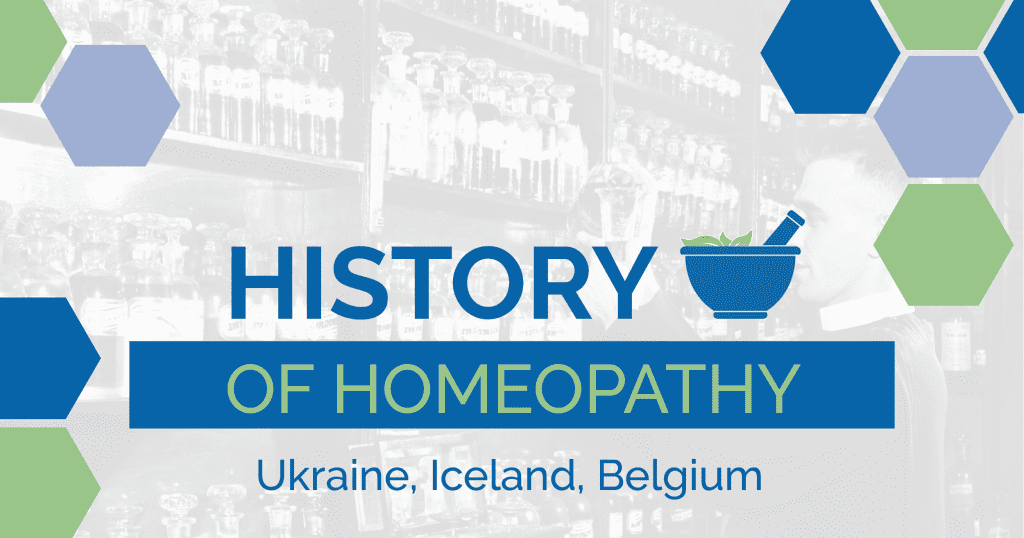More Snapshots From the There and Then

Ukraine
Homeopathy had a firm foundation in Ukraine during Hahnemann’s lifetime. With the support and public use by Russian royalty, prominent aristocrats, and merchants. and other public figures. The use of homeopathic products in Ukraine also rose spectacularly through the 19th century. The first homeopathic pharmacy opened in Kyiv in 1867; others followed elsewhere, along with two prominent homeopathic hospitals.
Over a 35-year period encompassing the revolutionary events in Russia, repressions in the 1930s, and the destruction in WWII, homeopathy’s outwardly ground to a halt. However, homeopaths continued to work in difficult and sometimes illegal circumstances over a period of seven decades. After the breakup of the Soviet Union, homeopathy flourished spectacularly. There are now more than 5,000 active practitioners, and multiple national meetings and training sessions have occurred in the last 30 years.
A wide range of homeopathic products are available from more than 30 facilities registered with the regulators. Of these, seven are domestic and account for approximately 15% of the total Ukrainian homeopathic turnover. Of the total products, 60% are liquids and tablets, with the rest in 10 other dosage forms.
Iceland
Homeopathy arrived in Iceland 120 years ago when a missionary couple, who were also trained in homeopathy, arrived and treated patients across the island. Not long afterward, laws were amended to recognize homeopathy as a valid medical practice. This was reversed in 1932 and resulted in the rapid disappearance of homeopathy. Sixty years later, a small group, including grandchildren of the early pioneers, worked to restore homeopathy’s reputation and to set up a teaching course. A decade later, a new law again allowed qualified homeopaths to practice legally.
The number of homeopaths in Iceland today is steadily increasing, though the modality is still relatively unknown there. While it is legal to obtain medicines from other E.U. countries, there are difficulties in obtaining a wide enough variety and in sufficient quantities. For this reason, Iceland has developed a number of locally sourced unique medicines.
Belgium
The first homeopaths began practicing around 1830. By 1870, the influential Dr. Gottlieb Heinrich Georg Jahr settled in Brussels, where he taught homeopathy to many other doctors. (Dr. Jahr co-contributed to the first proto-pharmacopeia to appear in the United States [New Homeopathic Pharmacopeia and Posology, or The Mode of Preparing Homeopathic Remedies and the Administration of Doses (1850)]). The following year, a homeopathic physicians’ society was formed, which remains active 150 years later. By 1894, 70 doctors officially used homeopathy, and 50 pharmacists provided medications to patients.
Shortly after WWII, homeopathic education was only available at a single training site. Due to the rapid increase of students interested in homeopathy, schools were created in six additional Belgian cities. Today, more than 4,000 medical doctors (about 10% of all doctors) prescribe homeopathic medications at least occasionally, and one-fourth of the Belgian population uses homeopathy.
References:
https://www.thepharmajournal.com/archives/2018/vol7issue4/PartM/7-4-52-734.pdf
https://www.homeopat.org.ua/en/історія-гомеопатії-в-україні-передмо/
https://www.wholehealthnow.com/homeopathy_pro/iceland.html
https://homeopathy-soh.org/spotlight-on-iceland-in-latest-edition-of-new-homeopathy/
